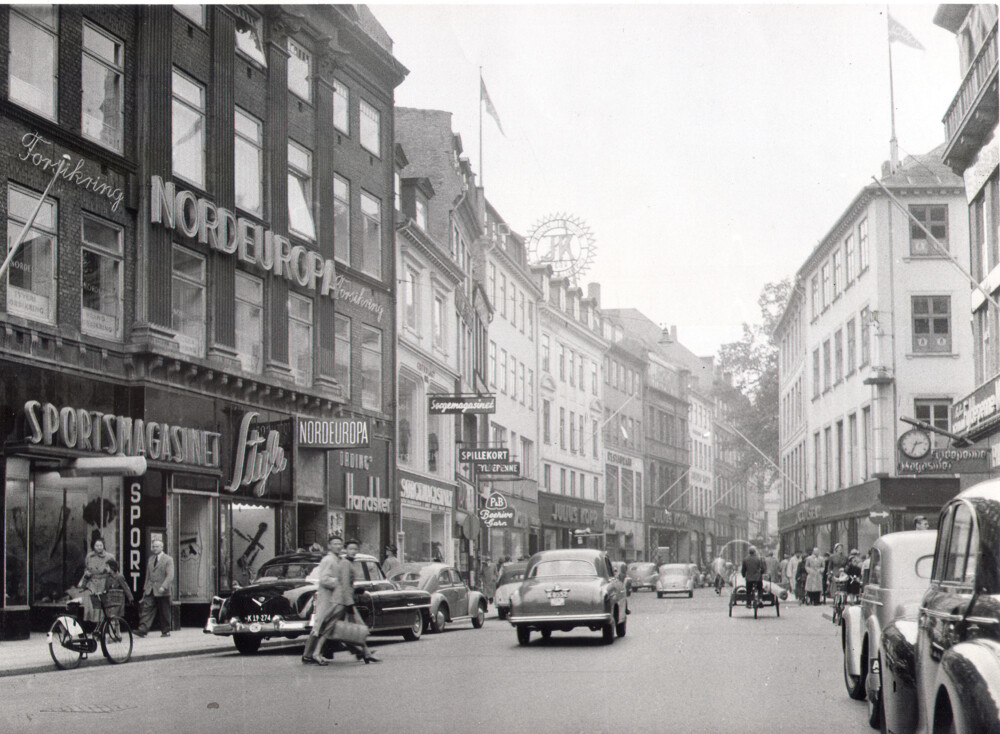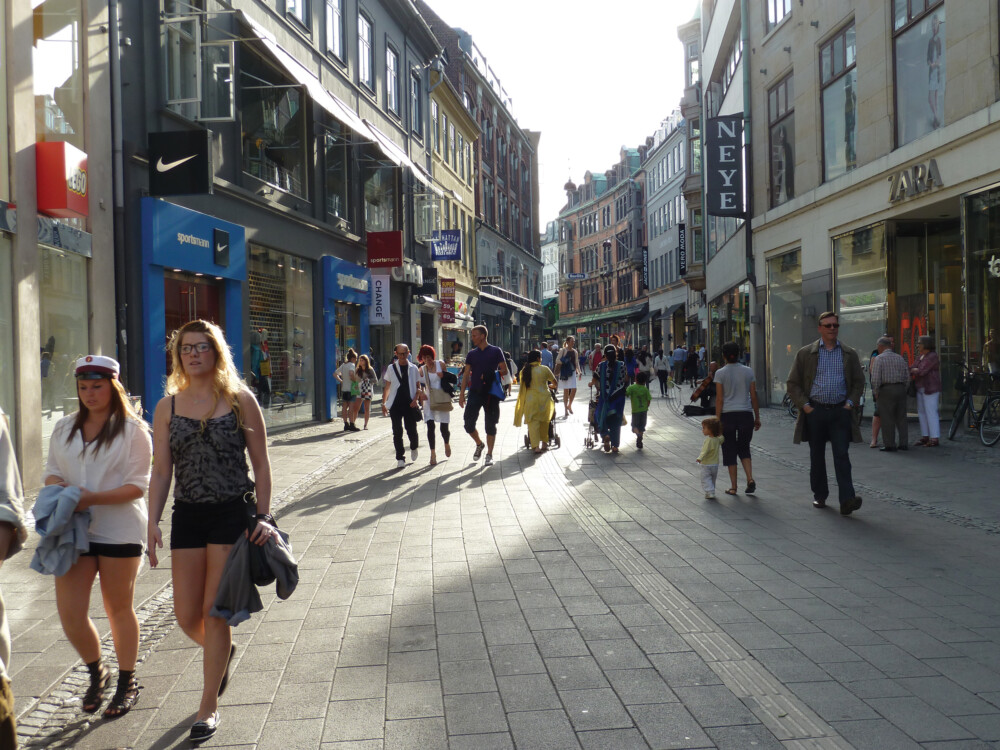-
About Streets
- Introduction
- Defining Streets
-
Shaping Streets
- The Process of Shaping Streets
- Aligning with City and Regional Agendas
- Involving the Right Stakeholders
- Setting a Project Vision
- Communication and Engagement
- Costs and Budgets
- Phasing and Interim Strategies
- Coordination and Project Management
- Implementation and Materials
- Management
- Maintenance
- Institutionalizing Change
- Measuring and Evaluating Streets
-
Street Design Guidance
- Designing Streets for Great Cities
- Designing Streets for Place
-
Designing Streets for People
- Utilities and Infrastructure
- Operational and Management Strategies
- Design Controls
-
Street Transformations
- Streets
-
Intersections
- Intersection Design Strategies
- Intersection Analysis
- Intersection Redesign
- Mini Roundabout
- Small Raised Intersection
- Neighborhood Gateway Intersection
- Intersection of Two-Way and One-Way Streets
- Major Intersection: Reclaiming the Corners
- Major Intersection: Squaring the Circle
- Major Intersection: Cycle Protection
- Complex Intersection: Adding Public Plazas
- Complex Intersection: Improving Traffic Circles
- Complex Intersection: Increasing Permeability
- Resources
Global Street Design Guide
-
About Streets
- Introduction
- Defining Streets
-
Shaping Streets
Back Shaping Streets
- The Process of Shaping Streets
- Aligning with City and Regional Agendas
- Involving the Right Stakeholders
- Setting a Project Vision
- Communication and Engagement
- Costs and Budgets
- Phasing and Interim Strategies
- Coordination and Project Management
- Implementation and Materials
- Management
- Maintenance
- Institutionalizing Change
-
Measuring and Evaluating Streets
Back Measuring and Evaluating Streets
-
Street Design Guidance
-
Designing Streets for Great Cities
Back Designing Streets for Great Cities
-
Designing Streets for Place
Back Designing Streets for Place
-
Designing Streets for People
Back Designing Streets for People
- Comparing Street Users
- A Variety of Street Users
-
Designing for Pedestrians
Back Designing for Pedestrians
- Designing for Cyclists
-
Designing for Transit Riders
Back Designing for Transit Riders
- Overview
- Transit Networks
- Transit Toolbox
-
Transit Facilities
Back Transit Facilities
-
Transit Stops
Back Transit Stops
-
Additional Guidance
Back Additional Guidance
-
Designing for Motorists
Back Designing for Motorists
-
Designing for Freight and Service Operators
Back Designing for Freight and Service Operators
-
Designing for People Doing Business
Back Designing for People Doing Business
-
Utilities and Infrastructure
Back Utilities and Infrastructure
- Utilities
-
Green Infrastructure and Stormwater Management
Back Green Infrastructure and Stormwater Management
-
Lighting and Technology
Back Lighting and Technology
-
Operational and Management Strategies
Back Operational and Management Strategies
- Design Controls
-
Street Transformations
-
Streets
Back Streets
- Street Design Strategies
- Street Typologies
-
Pedestrian-Priority Spaces
Back Pedestrian-Priority Spaces
-
Pedestrian-Only Streets
Back Pedestrian-Only Streets
-
Laneways and Alleys
Back Laneways and Alleys
- Parklets
-
Pedestrian Plazas
Back Pedestrian Plazas
-
Pedestrian-Only Streets
-
Shared Streets
Back Shared Streets
-
Commercial Shared Streets
Back Commercial Shared Streets
-
Residential Shared Streets
Back Residential Shared Streets
-
Commercial Shared Streets
-
Neighborhood Streets
Back Neighborhood Streets
-
Residential Streets
Back Residential Streets
-
Neighborhood Main Streets
Back Neighborhood Main Streets
-
Residential Streets
-
Avenues and Boulevards
Back Avenues and Boulevards
-
Central One-Way Streets
Back Central One-Way Streets
-
Central Two-Way Streets
Back Central Two-Way Streets
- Transit Streets
-
Large Streets with Transit
Back Large Streets with Transit
- Grand Streets
-
Central One-Way Streets
-
Special Conditions
Back Special Conditions
-
Elevated Structure Improvement
Back Elevated Structure Improvement
-
Elevated Structure Removal
Back Elevated Structure Removal
-
Streets to Streams
Back Streets to Streams
-
Temporary Street Closures
Back Temporary Street Closures
-
Post-Industrial Revitalization
Back Post-Industrial Revitalization
-
Waterfront and Parkside Streets
Back Waterfront and Parkside Streets
-
Historic Streets
Back Historic Streets
-
Elevated Structure Improvement
-
Streets in Informal Areas
Back Streets in Informal Areas
-
Intersections
Back Intersections
- Intersection Design Strategies
- Intersection Analysis
- Intersection Redesign
- Mini Roundabout
- Small Raised Intersection
- Neighborhood Gateway Intersection
- Intersection of Two-Way and One-Way Streets
- Major Intersection: Reclaiming the Corners
- Major Intersection: Squaring the Circle
- Major Intersection: Cycle Protection
- Complex Intersection: Adding Public Plazas
- Complex Intersection: Improving Traffic Circles
- Complex Intersection: Increasing Permeability
- Resources
- Guides & Publications
- Global Street Design Guide
- Streets
- Pedestrian-Priority Spaces
- Pedestrian-Only Streets
- Pedestrian Only Streets: Case Study | Stroget, Copenhagen
Pedestrian Only Streets: Case Study | Stroget, Copenhagen

Location: Central Copenhagen, Denmark
Population: 0.5 million
Metro: 1.9 million
Length: 1.15 km (0.7 mi)
Right-of-Way: 10–12 m
Context: Mixed-use (Residential/Commercial)
Maintenance: Several repavings since 1963
Funding: Public
Overview
Until 1962, all the streets and squares of central Copenhagen were used intensively for vehicle traffic and parking, and were under pressure from the rapidly growing fleet of private vehicles.
The pedestrianization of Copenhagen began with the city’s main street, Strøget, which was converted in 1962 as an experiment. The conversion of the 1.15 km-long main street into a pedestrian street was seen as a pioneering effort, which gave rise to much public debate before the street was converted. “Pedestrian streets will never work in Scandinavia” was one theory. “No cars means no customers and no customers means no business,” said local business owners.
Soon, Strøget proved to be a huge success, with businesses realizing that traffic-free environments provide increased financial revenue. Magasin Torv, the square by Nikolaj Church, and Gråbrødre Torv were the first squares to be renovated.


Key Elements
- Removal of all traffic from the street.
- Removal of curbs and sidewalks, addition of new paving.
- Consolidation of street furniture to facilitate pedestrian movement.
Goals
- Improve connectivity in the city center.
- Provide a high-quality and attractive environment.
- Create a space that supports businesses.
- Encourage a diverse range of people to live and spend time in the city center.
- Revitalize the city’s forgotten alleyways by turning them into vibrant laneways.
Involvement
City of Copenhagen, Stadsarkitektens Direktorat, Stadsingeniørens Direktorat, Bjørn Nørgård.
Keys to Success
The successful pedestrianization of streets in Copenhagen can be attributed, in part, to the incremental nature of change, giving people the time to change their patterns of driving and parking into patterns of cycling and using collective transport to access key destinations in the city—in addition to providing time to develop ways of using this newly available public space.
Lessons Learned
The pedestrianization of Strøget highlighted the potential for outdoor public life in Denmark, as Danes never before had the room and the opportunity to develop a public life in public spaces. This pedestrianization created peaceful, yet lively, public spaces. Strøget also proved that pedestrian streets can increase revenue for local retailers.
Evaluation


Project Timeline

Strøget has been renewed and upgraded several times during its 53 years as a pedestrian street, by using progressively better-quality materials, repurposing public spaces and plazas to increase pedestrian comfort, and adding outdoor uses.
Amager Square was renovated in 1993 by local artist Bjørn Nørgård. Today, it is the second most popular urban space in the city because of the diverse range of activities offered there.
Adapted by Global Street Design Guide published by Island Press.
